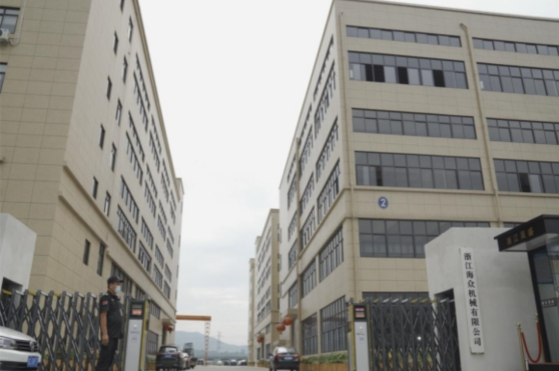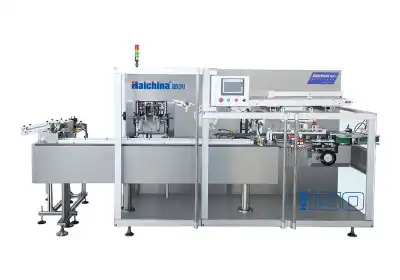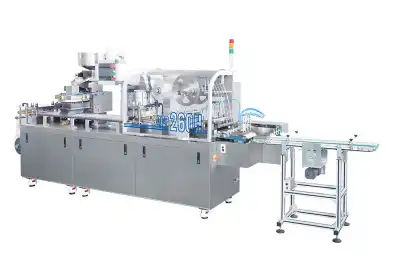Installation And Maintenance Of Blister Packing Machine
Blister packing machines are essential equipment in the pharmaceutical industry, efficiently sealing medications in individual pockets for protection and convenience. Proper installation and regular maintenance of these machines are crucial for optimal performance and longevity. This comprehensive guide explores the intricacies of setting up and caring for blister packaging machines and the associated blister cartoning machine, ensuring they operate at peak efficiency. From initial assembly to routine upkeep, we'll cover best practices that help maintain the quality and safety standards required in pharmaceutical packaging.

The Importance of Proper Installation for Blister Packaging Machines
Preparing the Installation Site
Proper site preparation is essential for the successful installation of a blister packing machine. The installation area must be clean, level, and free of dust or debris that could interfere with machine operation. Ensure that there is ample space around the machine for maintenance access, material loading, and operator workflow. Environmental conditions should be controlled - adequate ventilation, stable room temperature, and humidity management are critical for optimal machine performance and product quality. Installing proper electrical and pneumatic connections in advance will streamline setup and minimize delays during commissioning.
Unpacking and Assembly
Upon delivery of the blister cartoning machine, great care must be taken during unpacking to avoid any damage to sensitive components. Use appropriate lifting equipment and follow safety protocols to handle heavy or fragile parts. Inspect each component for visible damage or discrepancies against the packing list. Once verified, proceed with assembly according to the manufacturer's guidelines, ensuring correct alignment of mechanical parts, secure fastening of all joints, and proper routing of cabling and air lines. A systematic and careful assembly process lays the foundation for reliable machine performance and minimizes the risk of future operational issues.
Calibration and Testing
After the blister packaging machine for pharmacy use is fully assembled, precise calibration is essential to ensure optimal operation. This includes setting temperature controls for sealing, adjusting feeder timing, verifying die-cut alignment, and testing dosage accuracy for tablet or capsule placement. Run several test cycles using sample materials to evaluate packaging quality and identify any inconsistencies. Adjust settings as necessary to achieve uniform output. Thorough validation of the machine's performance at this stage is critical, as it helps prevent production delays, reduces material waste, and ensures compliance with pharmaceutical quality standards.
Essential Maintenance Procedures for Blister Packing Machines
Daily Cleaning Routines
Maintaining strict cleanliness standards is essential for ensuring product safety and regulatory compliance in pharmaceutical blister packaging. A thorough daily cleaning routine should include wiping all machine surfaces with approved cleaning agents, removing product residue or dust, and sanitizing critical contact points. Particular attention must be paid to the sealing and forming stations, where residue buildup can compromise seal integrity and cavity formation. Cleaning tasks should be documented and verified by operators or supervisors. Establishing a consistent cleaning schedule helps prevent contamination, supports machine efficiency, and contributes to overall product quality.
Regular Inspection and Lubrication
To keep blister packing machines and blister cartoning machines operating smoothly, regular inspection and lubrication of moving components is vital. Inspect belts, gears, chains, and guide rails for wear, misalignment, or signs of mechanical stress. Replace worn parts promptly to avoid unexpected breakdowns. Apply lubricants to bearings, actuators, and drive systems following the manufacturer's specifications, ensuring optimal movement and reducing friction. Consistent lubrication reduces energy consumption and prevents overheating. By proactively identifying and addressing potential mechanical issues, you can extend the machine's operational lifespan and maintain stable, high-quality output.
Scheduled Maintenance Checks
Beyond daily and weekly routines, scheduled maintenance checks provide a deeper layer of equipment care. These checks should occur monthly or quarterly, depending on usage intensity, and involve testing electrical wiring and control systems, inspecting pneumatic cylinders and valves, and verifying calibration of temperature, sealing pressure, and timing mechanisms. Include software diagnostics and safety interlock testing where applicable. These comprehensive evaluations help identify subtle performance drifts or hidden issues that daily routines might miss. A well-executed preventive maintenance plan reduces the risk of major failures and ensures consistent, uninterrupted production.
Troubleshooting Common Issues in Blister Packing Machines
Addressing Sealing Problems
Sealing issues are among the most frequent challenges in blister packing operations and can compromise product integrity and shelf life. These problems often stem from incorrect temperature or pressure settings, worn or damaged sealing tools, or misaligned materials. To prevent such issues, conduct routine inspections of sealing surfaces and replace worn components promptly. It's also important to calibrate temperature and pressure settings regularly according to the material specifications. Implementing a preventive maintenance schedule can ensure consistent seal quality and reduce the likelihood of package failure during storage or distribution.
Resolving Feed and Alignment Issues
Material feed and alignment problems can cause significant disruptions in blister packaging lines, resulting in misformed blisters, poor sealing, or misapplied lidding. These issues are typically caused by clogged or worn feeding components, improper tensioning, or misaligned guide rails. To ensure smooth operation of blister packaging machines for pharmacy, clean feed paths regularly and verify that all rollers, tracks, and guides are positioned correctly. Adjust sensors and actuators as needed to maintain synchronization. By proactively managing feed and alignment accuracy, manufacturers can reduce downtime, minimize waste, and maintain consistent package quality throughout production runs.
Optimizing Machine Performance
Maintaining optimal performance in blister packing machines requires a combination of hardware upkeep and digital management. Regular updates to the machine's software and firmware help enhance functionality, fix bugs, and introduce new performance features from the manufacturer. Monitoring key performance indicators - such as cycle time, rejection rate, and output consistency - can help identify inefficiencies. Based on real-time data, operators can fine-tune machine settings to strike the right balance between speed and quality. This data-driven approach not only boosts productivity but also reduces waste and ensures better control over product quality.
Conclusion
Proper installation and diligent maintenance of blister packaging machines for pharmacy are crucial for ensuring consistent, high-quality output in pharmaceutical packaging operations. By following these guidelines for setup, regular upkeep, and troubleshooting, manufacturers can maximize the efficiency and longevity of their equipment. Remember, a well-maintained blister packing machine not only improves productivity but also plays a vital role in maintaining the safety and integrity of pharmaceutical products.
Contact Us
For more information on our range of blister packaging solutions and expert support, please contact Zhejiang Haizhong Machinery Co.,Ltd. at [email protected]. Our team is ready to assist you in optimizing your packaging processes and ensuring the highest standards of quality and efficiency.
References
Johnson, A. (2022). "Advanced Techniques in Pharmaceutical Packaging Machinery."
Smith, B. et al. (2021). "Maintenance Strategies for Pharmaceutical Equipment."
Pharmaceutical Engineering Journal. (2023). "Innovations in Blister Pack Technology."
Brown, C. (2020). "Quality Control in Pharmaceutical Packaging: A Comprehensive Guide."
International Journal of Packaging Technology. (2022). "Sustainability in Pharmaceutical Packaging Machines."
Davis, E. (2021). "Troubleshooting Guide for Blister Packing Equipment."

Submit the form now to get a unique quote!

ZHEJIANG HAIZHONG MACHINERY CO., LTD.
Popular Blogs
-
 Successful caseProducts and services
Successful caseProducts and servicesHow to Train Employees to Operate a Bottle Packing Machine Effectively?
-
 Successful caseIndustry insights
Successful caseIndustry insightsThe Blister Packaging Process: A Complete Step-by-Step Guide
-
 Successful caseComparative analysisIndustry insights
Successful caseComparative analysisIndustry insightsWhat Type of PVC Is Best for Blister Packing Machines?